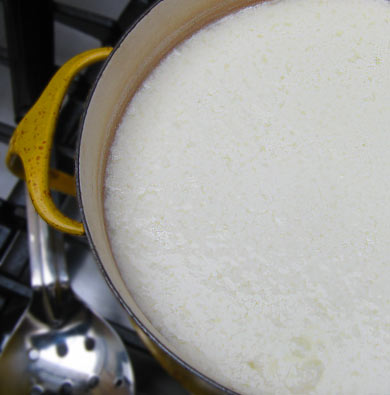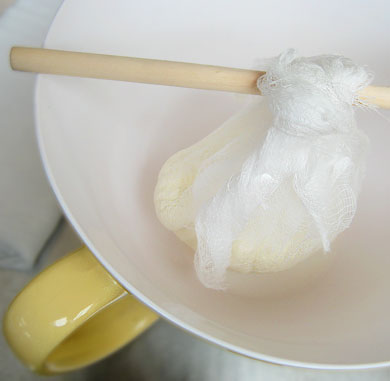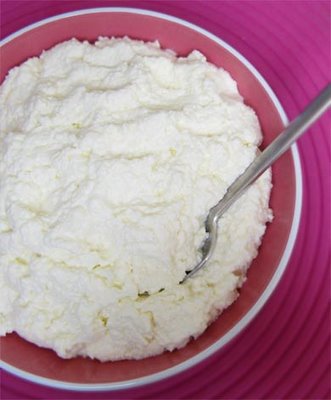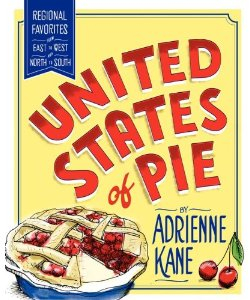 I always buy all of the November food magazines. I like to see what menus the editors have planned for the gluttonous holiday, Thanksgiving. Sometimes I find a recipe for yams that looks tempting, or a new way to shred my brussels sprouts, but usually I stick to the tried and true standbys that I love to make each fall. What can I say? I am a traditionalist. But the magazines stay dog-eared, pages crumpled beside my bedside table for the whole month of November.
I always buy all of the November food magazines. I like to see what menus the editors have planned for the gluttonous holiday, Thanksgiving. Sometimes I find a recipe for yams that looks tempting, or a new way to shred my brussels sprouts, but usually I stick to the tried and true standbys that I love to make each fall. What can I say? I am a traditionalist. But the magazines stay dog-eared, pages crumpled beside my bedside table for the whole month of November.
But this November was different. Amongst the recipes for Fennel, Red Onion and Focaccia Stuffing, which I won’t be making, I saw a recipe for homemade ricotta cheese in Food and Wine magazine. Well, I love a good project. And if that project involves a mess of milk, a bit of cream, and not a whole lot else, well– even better. Off to the market I went, returning home with a small bag of ingredients, and the will to make cheese.
 First I cooked my milk and cream to 185 degrees. Turning off the stove, I then added three tablespoons of white vinegar. I watched as what moments ago was a steaming, luscious vat of smooth milk became a clumpy, curdled mass almost immediately. I added a bit of salt, continued stirring for a few seconds more, then covered the milk with a clean cloth and let it set for two hours.
First I cooked my milk and cream to 185 degrees. Turning off the stove, I then added three tablespoons of white vinegar. I watched as what moments ago was a steaming, luscious vat of smooth milk became a clumpy, curdled mass almost immediately. I added a bit of salt, continued stirring for a few seconds more, then covered the milk with a clean cloth and let it set for two hours.
 Setting a cheese cloth-lined colander in a large bowl, I scooped the curds that had risen to the top of the milk mixture out with a slotted spoon. What was left, was quite a bit of whey, and a portion of milky white curds. I then gathered up the corners of the cheese cloth and tied the cloth to a wooden spoon. This created a hammock for my curds to continue to drain off whey.
Setting a cheese cloth-lined colander in a large bowl, I scooped the curds that had risen to the top of the milk mixture out with a slotted spoon. What was left, was quite a bit of whey, and a portion of milky white curds. I then gathered up the corners of the cheese cloth and tied the cloth to a wooden spoon. This created a hammock for my curds to continue to drain off whey.
 After one half hour, the curds were sufficiently drained, I untied the cheese cloth and unfurled my handiwork. One taste of this ricotta, still warm from the cooking, and I was in milkmaid heaven. The taste is clean and pure, hardly salted, it is more of a texture rather than a flavor. I have eaten ricotta of all sorts: freshly made by a cheese monger, conventionally made and ready to be served from plastic containers, and now homemade. And let me tell you, the homemade is the best– hands down.
After one half hour, the curds were sufficiently drained, I untied the cheese cloth and unfurled my handiwork. One taste of this ricotta, still warm from the cooking, and I was in milkmaid heaven. The taste is clean and pure, hardly salted, it is more of a texture rather than a flavor. I have eaten ricotta of all sorts: freshly made by a cheese monger, conventionally made and ready to be served from plastic containers, and now homemade. And let me tell you, the homemade is the best– hands down.
Although I could have eaten this ricotta plain, like yogurt, I restrained myself. I served it in a variety of ways in the passing days: stirred into a risotto-like dish; spooned on top of plump, homemade gnocchi; dabbed on an apple galette; and spread on crusts of bread, crostini style. The process may take awhile, but the ricotta is definitely worth the wait.
The complete recipe can be found here.


